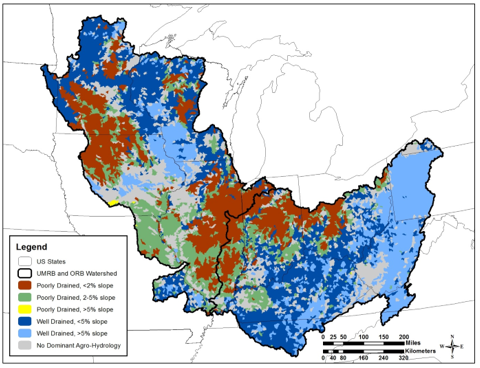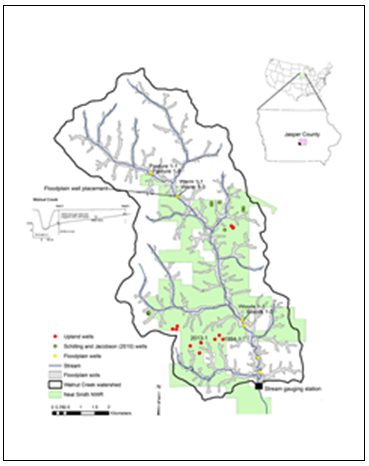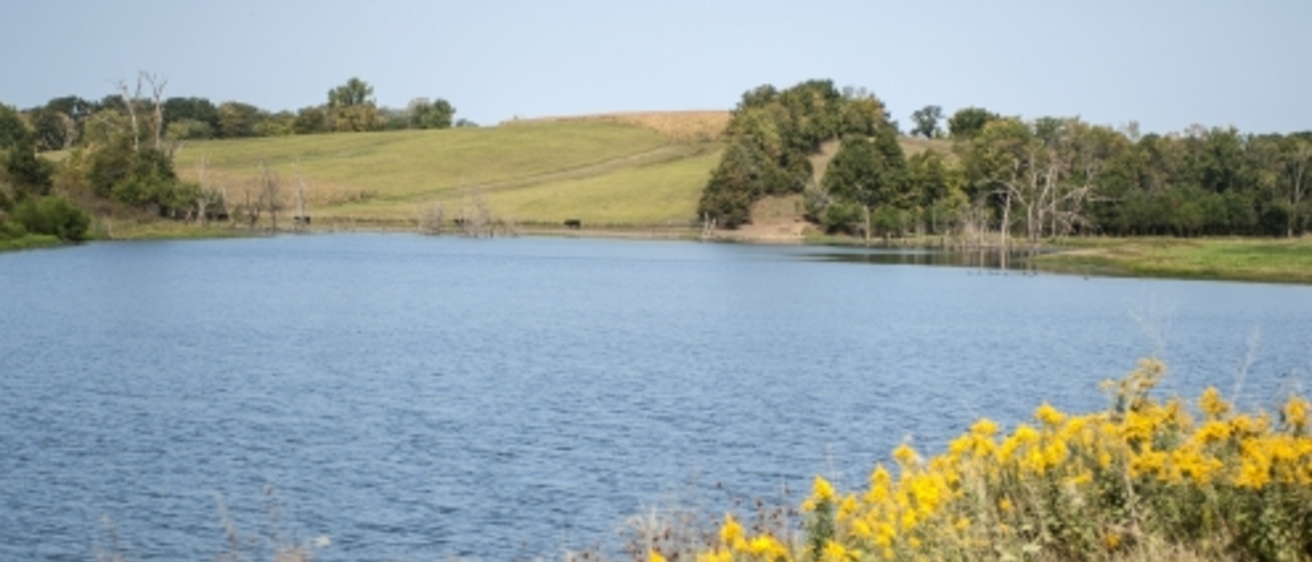Nonpoint source pollution from nitrate-nitrogen (nitrate) and phosphorus (P) contributes to nutrient enrichment in local streams and lakes, leading to the development of hypoxic (dead) zones in regional water bodies, including the Gulf of Mexico.
IGS researchers are investigating water quality and nutrient patterns, processes, scales, and trends throughout Iowa and the Upper Mississippi River Basin. Led by State Geologist Keith Schilling, IGS partners with scientists from University of Iowa, IIHR, Iowa State University, and several Iowa colleges (Grinnell, Coe, Kirkwood). We also work with commodity groups and non-government organizations such as The Nature Conservancy. Our research focuses on assessing current conditions and finding new and innovative solutions for water-quality problems. Some examples of recent projects provide a glimpse of some of this research.
Projects
Regional Analysis

Sponsor: Walton Family Foundation
Background: Targeting the “right practice” to the “right place” is critical for successful interception of pollutant flowpaths.
Goals: To identify appropriate conservation practices for small watersheds in the basin
IGS Strategies: IGS developed an agro-hydrologic classification to identify N and P loss pathways and prioritize conservation practices in small watersheds in the U.S. Midwest, as well as a GIS framework to classify 11,010 small watersheds in the Upper Mississippi and Ohio River basins based on soil permeability and slope characteristics.
More Information: Hydrologic differences in cropped systems indicate that a one-size-fits-all approach to conservation selection will not work. This classification scheme could be an appropriate first step to identify appropriate conservation practices for small watersheds in the basin.
Watershed Water-Quality Studies

Sponsor: USDA National Institute of Food and Agriculture
Background: Recent studies in the Walnut Creek Watershed found that spatial nitrate (NO3-N) and orthophosphorus (OP) concentrations in upland and floodplain groundwater differ depending on the landscape setting.
Goal: To characterize spatial patterns of groundwater OP concentrations and loading rates within the an Iowa watershed over a two-year period.
IGS Strategies: Strategically siting conservation practices in floodplain areas for disproportionately larger water-quality benefits.
More Information: Groundwater orthophosphorus concentrations were higher in floodplains than in uplands. OP loading rates beneath floodplains are approximately three times higher than in uplands. It takes eight years to flush out existing OP mass present in shallow groundwater.
Total Phosphorus Surrogates

Sponsor: Iowa Department of Natural Resources
Background: Accurate measurement of total phosphorus (TP) concentrations in rivers are necessary to quantify loads and evaluate the progress of nutrient reduction strategies.
Goal: To accurately measure TP concentrations in rivers in order to quantify loads and evaluate the progress of nutrient reduction strategies.
IGS Strategies: New research focused on the relation of water-quality surrogates, turbidity, orthophosphorus (OP), chlorophyll a, chloride, and discharge to TP concentrations at 43 different river monitoring sites. IGS found that turbidity and OP are the dominant surrogates needed to estimate TP concentrations in Iowa rivers.
Publications
Schilling, K.E., C.F. Wolter and E. McLellan. 2014. Agro-hydrologic landscapes in the Upper Mississippi and Ohio river basins. Environmental Management, 55:646-656).
Schilling, K.E., M.T. Streeter, T.M. Isenhart, W.J Beck, M.D. Tomer, K.J. Cole and J.L. Kovar. 2018. Distribution and mass of groundwater orthophosphorus in an agricultural watershed. Science of the Total Environment 65:1330-1340.
Schilling, K.E., K. Kim and C.S. Jones. 2017. Use of water quality surrogates to estimate total phosphorus concentrations in streams. Journal of Hydrology: Regional Studies, 12:111-121.
Schilling, K.E., M.T. Streeter, D. Quade and M. Skopec. 2016. Groundwater loading of nitrate-nitrogen and phosphorus to a large glacial lake, Iowa. Journal of Great Lakes Research, 42:588-598.
Contact Us

Keith Schilling
State Geologist and Research Scientist
PhD, University of Iowa
319-335-1422
keith-schilling@uiowa.edu
